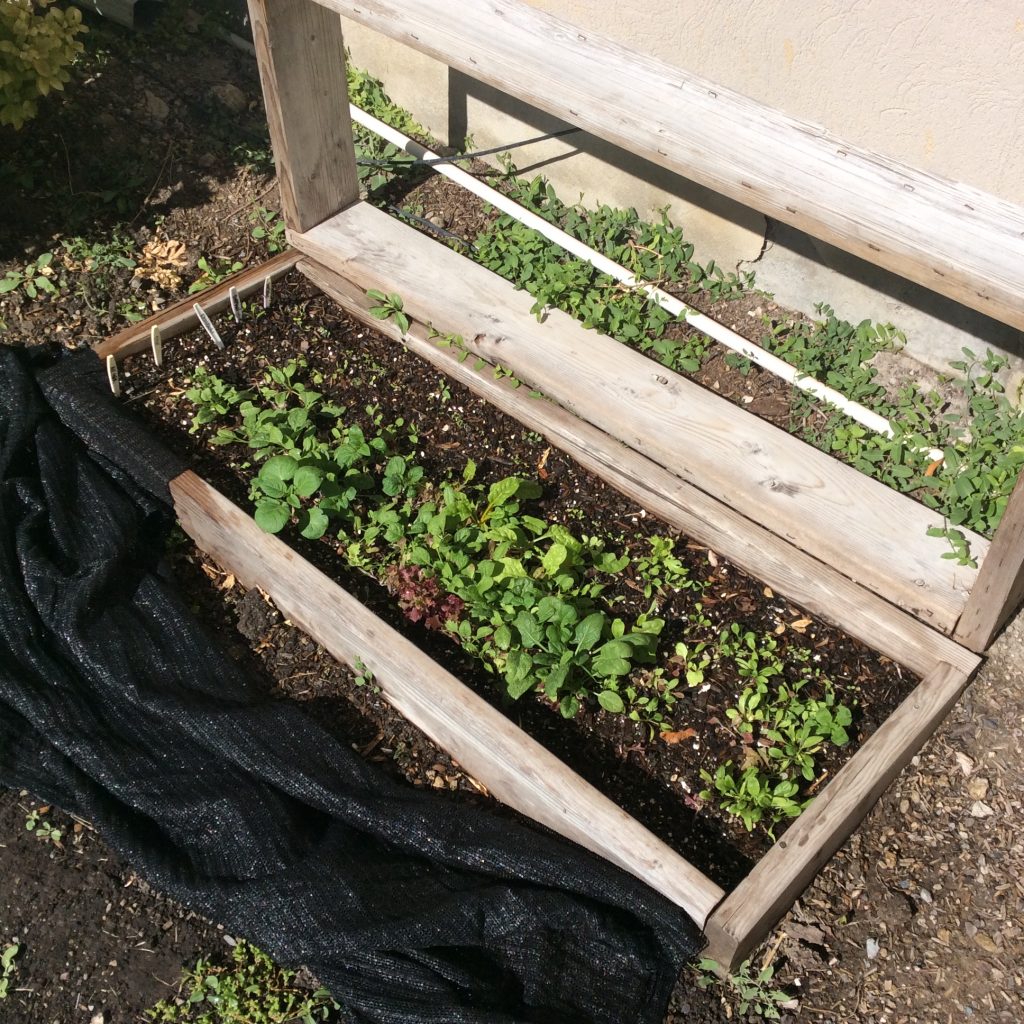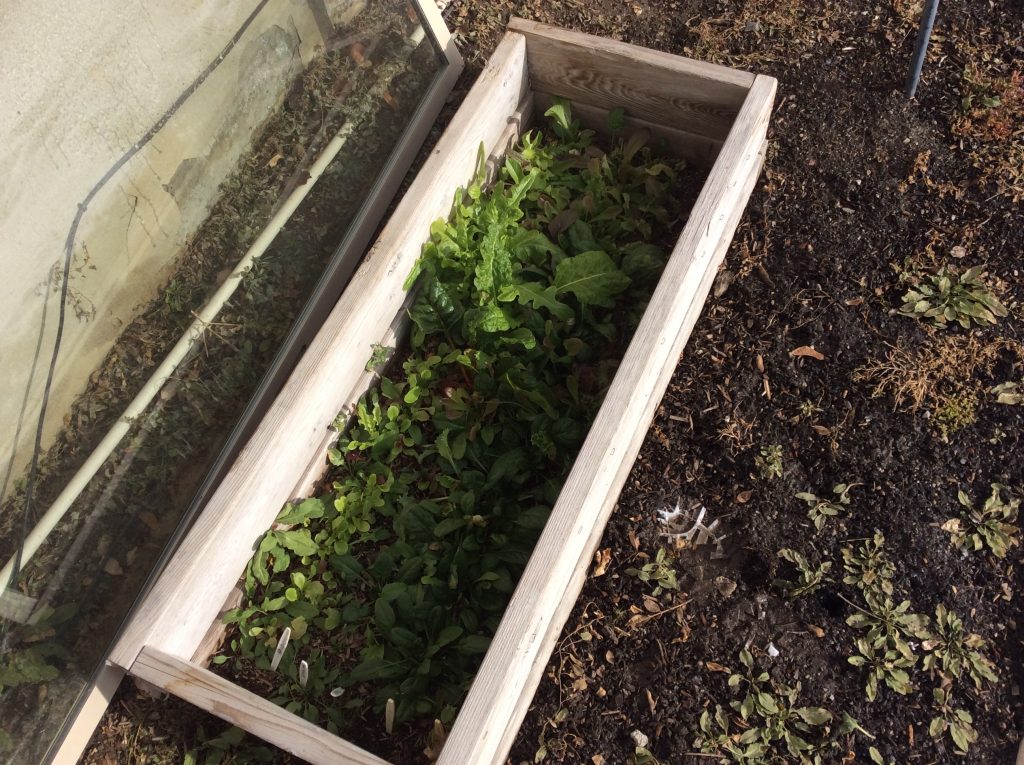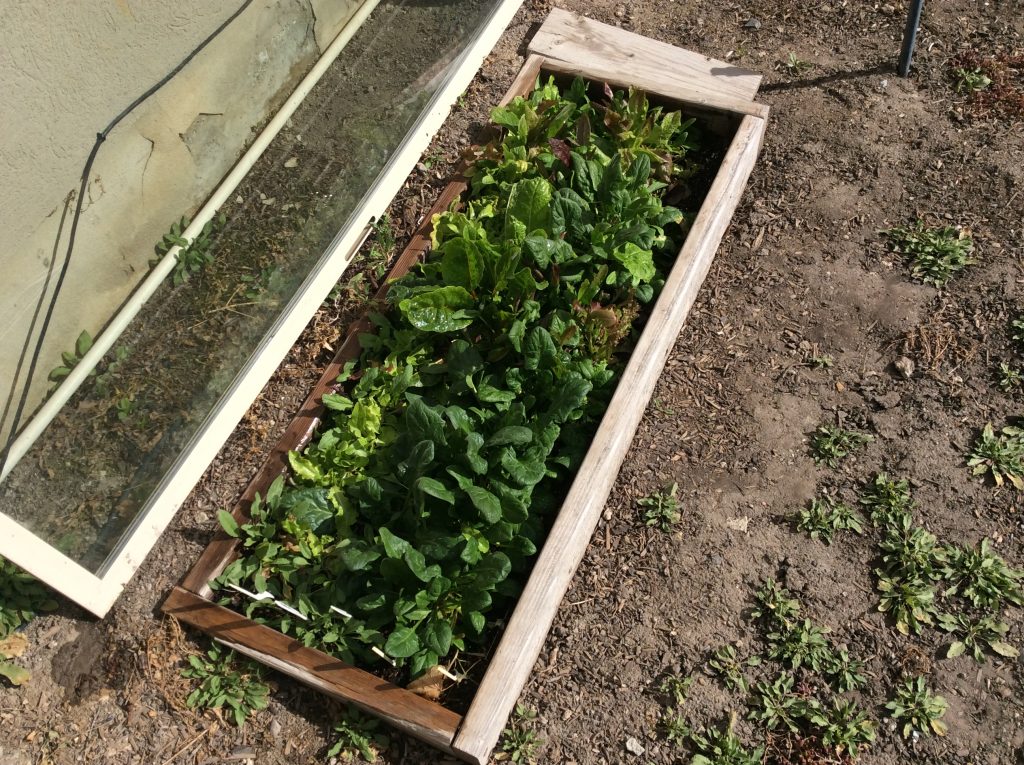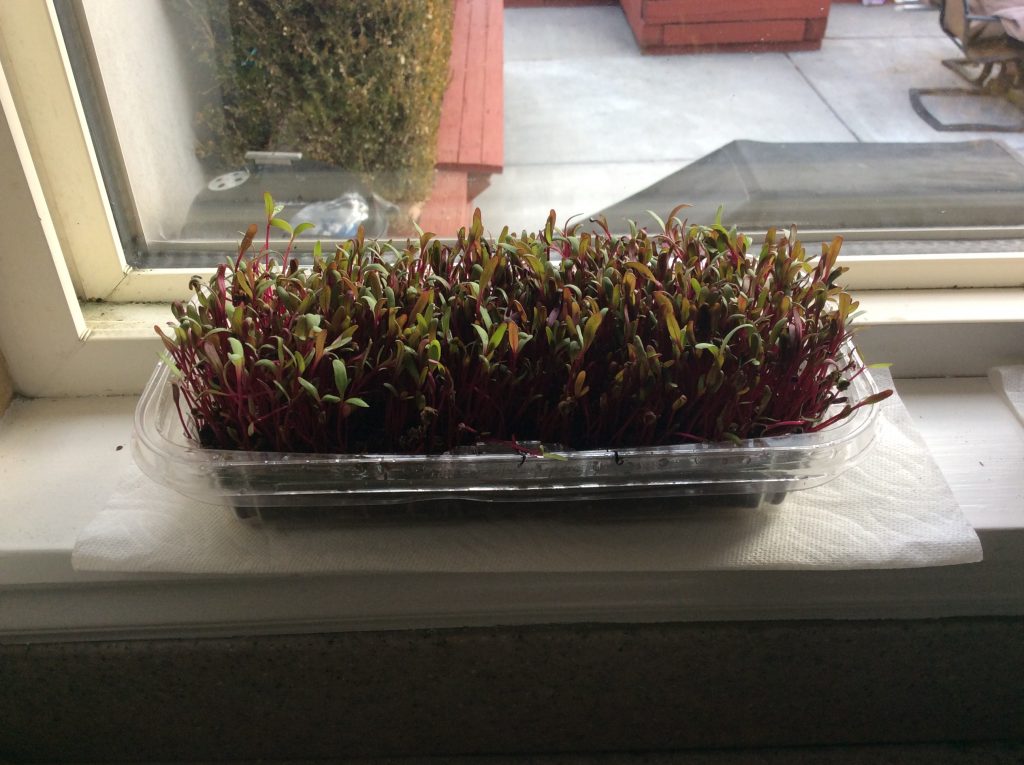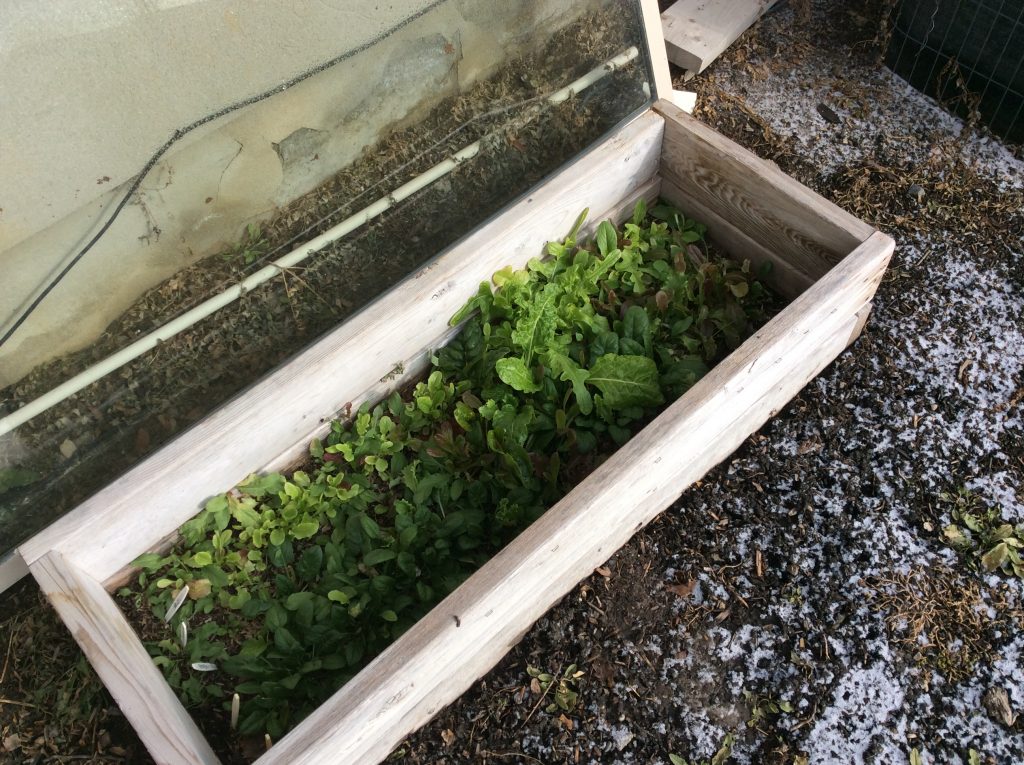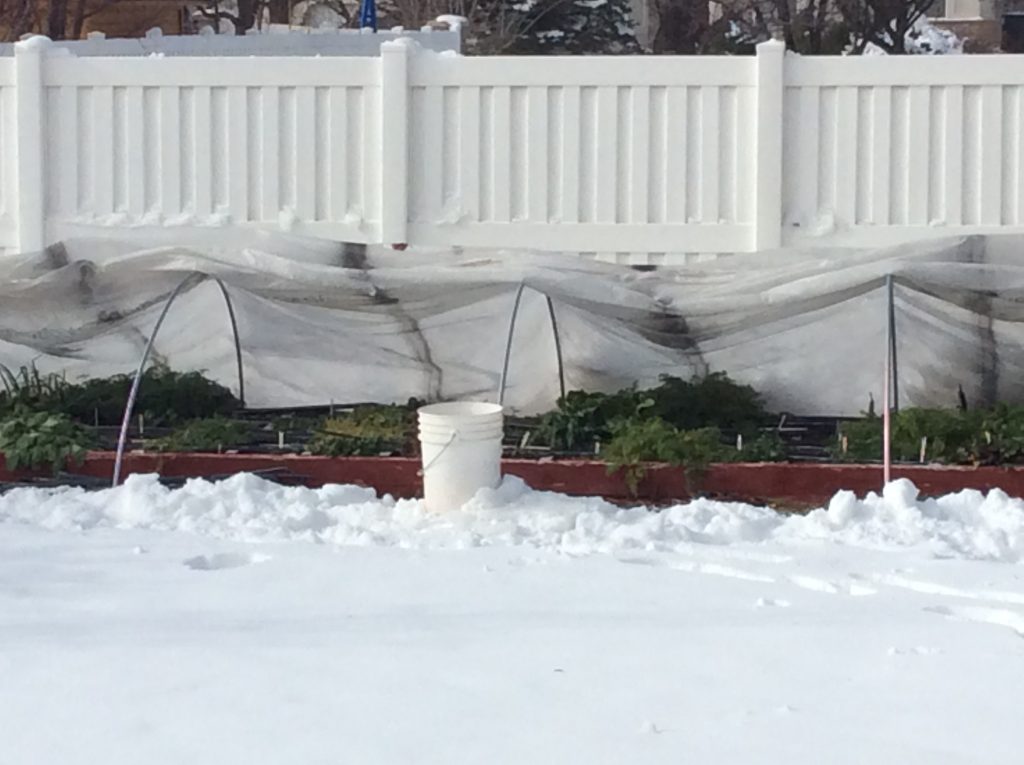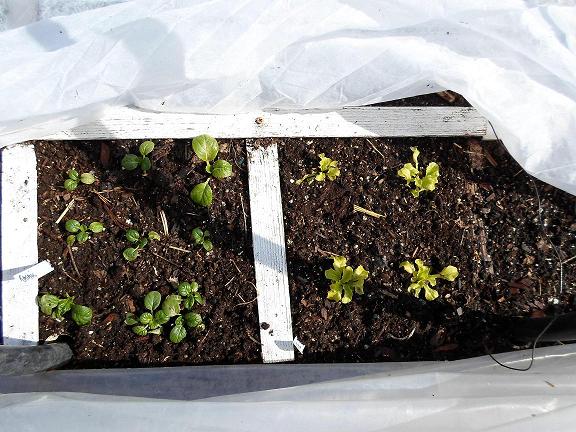 Many folks are always asking the question: when do I start planting and what? That will depend on your zone. I’m 6B in northern Utah where winters can be harsh; complete with lots of snow, fierce winds, and low temperatures. Its not as bad as some locations to grow but it surely has its challenges.
Many folks are always asking the question: when do I start planting and what? That will depend on your zone. I’m 6B in northern Utah where winters can be harsh; complete with lots of snow, fierce winds, and low temperatures. Its not as bad as some locations to grow but it surely has its challenges.
After doing this for over 30 years you get a feel for things. Some of my first plantings have already been direct seeded into the garden. Others have been started indoors and will go into the “sun box” in another 2-3 weeks. See previous posts that discuss the sun box. This picture is tatsoi-a great and frost hardy Asian green that’s delicious as a salad mix-in. The other is black seeded simpson elite. There’s some reason why elite is supposed to be better than regular black seeded simpson, I just haven’t been able to figure out what the difference is.
For those who need a little extra guidance, try this garden planner by Burpee. You can even download an app on your device to give you reminders of when to do things. I’ve found it pretty handy, especially when I just get too busy and forget to plant something.
For you northern Utah folks interested in learning how to make compost, see my class coming up, as well as one on growing microgreens at home. Today is the last day for you to order 1 pack of seeds from Burpee and get another one free. I ordered a pack of San Marzano tomatoes and a pack of Fortex pole beans. Spring is here for me.[ois skin=”3″]

